Primates’ DNA highlights applications for human health
Primates’ DNA highlights applications for human health
The genomes of 233 primate species reveal key features of primate evolution, human disease and biodiversity conservation
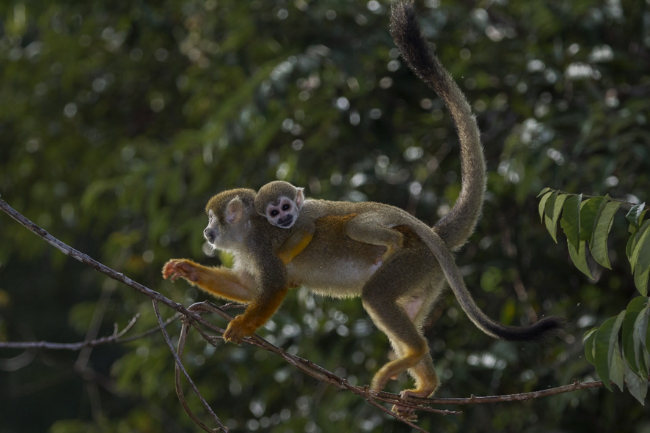
The Institute of Evolutionary Biology (IBE, CSIC-UPF), Pompeu Fabra University, Illumina, and Baylor College of Medicine have led a special issue of Science, one of the few produced by Spain.
After generating the most complete catalogue of genomic information for primates ever produced, this project compared the genomes of 809 individuals from 233 species of primates involving researchers from 24 countries.
The studies have helped to create a new AI algorithm with clinical applications to identify new insights into the genetic causes of human disease using the primates’ genomic data. These studies have discovered DNA sequence variants and developed phylogenies for primate species that will provide new data on primate and human evolution, as well as primate biodiversity.
Results have shown that baboons (genus Papio) experience hybridization and interspecies gene flow in multiple regions of Africa and that yellow baboons from western Tanzania are the first nonhuman primate to have received genetic input from three different lineages.
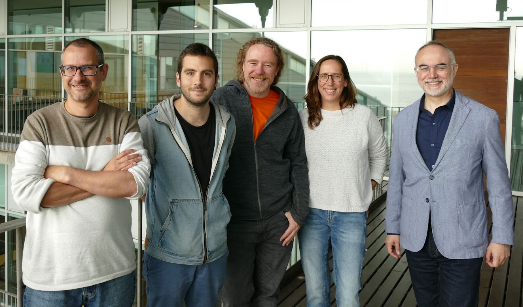
From left to the right: Tomàs Marquès-Bonet, Alejandro Valenzuela, David Juan, Esther Lizano i Arcadi Navarro. researchers at l’IBE - UPF who participated in the studies. Credit: IBE i UPF.
In one of the few special issues of the journal Science directed from Spain, the genomes of 86% of genera and all primate families have been revealed. Of these, 8 out of 10 have been sequenced at the National Center for Genomic Analysis (CNAG) in Barcelona.
"This project has been one of the most important that we have worked on in recent years at the CNAG. We have developed a new sequencing methodology, analyzing more than 600 primate genomes. Undoubtedly, a key study that has allowed us to obtain a very complete view of the genetic variation of primates and also of the human genome", explains Ivo Gut, director of the CNAG.
The study provides new information about primates’ genetic diversity and phylogeny, which is important for understanding and conserving the biodiversity of the closest species to our own.
By comparing the genomes of 809 nonhuman primate individuals from 233 species to the human genome, the research has identified 4.3 million common missense mutations that affect the composition of amino acids and can alter the function of proteins, leading to many human diseases.
Rare missense mutations can raise the risk of disease
One of the limitations of human and clinical genetics is the current inability to detect, among hundreds of thousands of mutations, the ones that cause diseases. Currently, the genetic causes of many common diseases, such as diabetes and heart disease, are unknown, due either to the lack of genetic information or to the large number of genetic factors involved. Some diseases are thought to originate when a set of genetic variations or mutations with a “mild” effect act together to cause a disease of polygenic origin, like diabetes or cancer.
“6% of the 4.3 million missense mutations identified are abundant in primates and are therefore considered “potentially benign” in human disease, given that their presence is tolerated in these animals”, states Kyle Farh, vice president of Artificial Intelligence at Illumina.
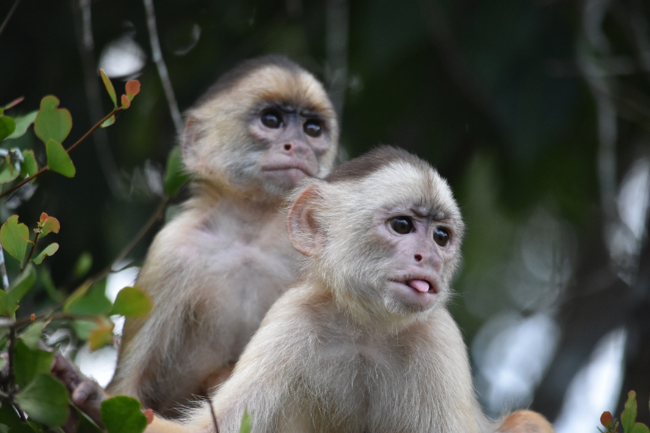
White-fronted Capuchin (Cebus unicolor) near Manaus, Brazil. Credit: Rebecca Still
The identification of disease-causing mutations has been achieved thanks to the PrimateAI-3D deep learning algorithm. PrimateAI-3D is an artificial intelligence (AI) algorithm developed by Illumina, the world’s leading company in DNA sequencing, and is a kind of ChatGPT for genetics that uses genome sequences instead of human language.
New insights into primate evolution and human uniqueness
The publication of this project includes the most complete catalogue of primate genomic information produced so far, covering nearly half of all existing primate species on Earth. It contains information of primates from Asia, America, Africa, and Madagascar.
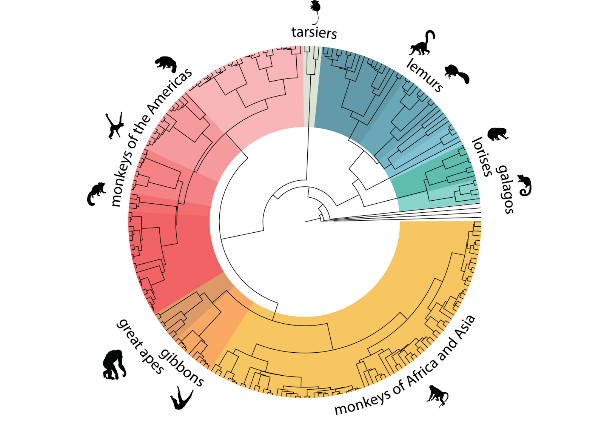
Primates phylogenetic tree. Credit: Lukas Kuderna
According to Tomàs Marquès-Bonet, "Humans are primates. The study of hundreds of nonhuman primate genomes, given their phylogenetic position, is very valuable for human evolutionary studies, to better understand the human genome and the bases of our singularity, including the bases of human diseases, and for their future conservation."
These studies have also indicated that the genetics of primates does not always match their taxonomy. We found several cases in which relationships among primate species are best described as complex and network-like rather than simple branching trees.
Another study delves deeper into the evolution of baboon species, a large and diverse group of monkeys, showing that there have been several episodes of hybridization and gene flow among species that were not previously recognized. In addition, we found that yellow baboons from western Tanzania are the first nonhuman primate to have received genetic input from three different lineages
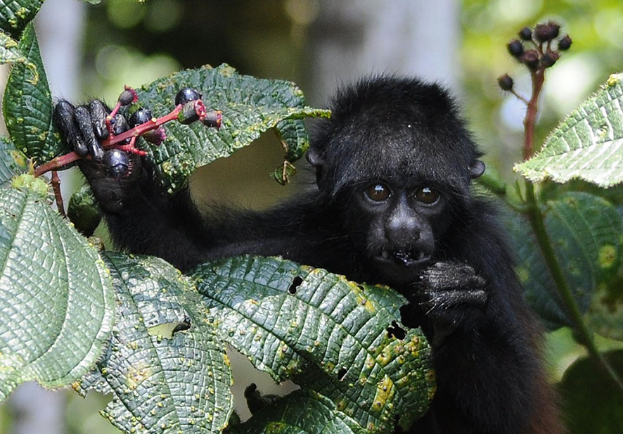
Cacajao hosomi, juvenile in southern Venezuela. Credit: Jan Dungel
“Our studies provide clues as to which species are in most dire need of conservation efforts, and could help to identify the most effective strategies to preserve them.”, Lukas Kuderna, first author of one of the studies, asserts.
Lastly, the new genomic catalogue has halved the number of genomic innovations that were believed to be exclusively human. This observation facilitates the identification of mutations that are not shared with primates that may consequently be unique to human evolution and the characteristics that make us human.
Reference articles:
Kuderna, L.F.K et al., ‘A global catalog of whole-genome diversity from 233 primate species‘ Science. May, 2023. DOI: 10.1126/science.abn7829
Sorensen, E, et al., ‘Genome-wide coancestry reveals details of ancient and recent male-driven reticulation in baboons‘ Science. May 2023. DOI: 10.1126/science.abn8153
Gao, H, et al., ‘The landscape of tolerated genetic variation in humans and primates’ Science. May 2023. DOI: 10.1126/science.abn8197
